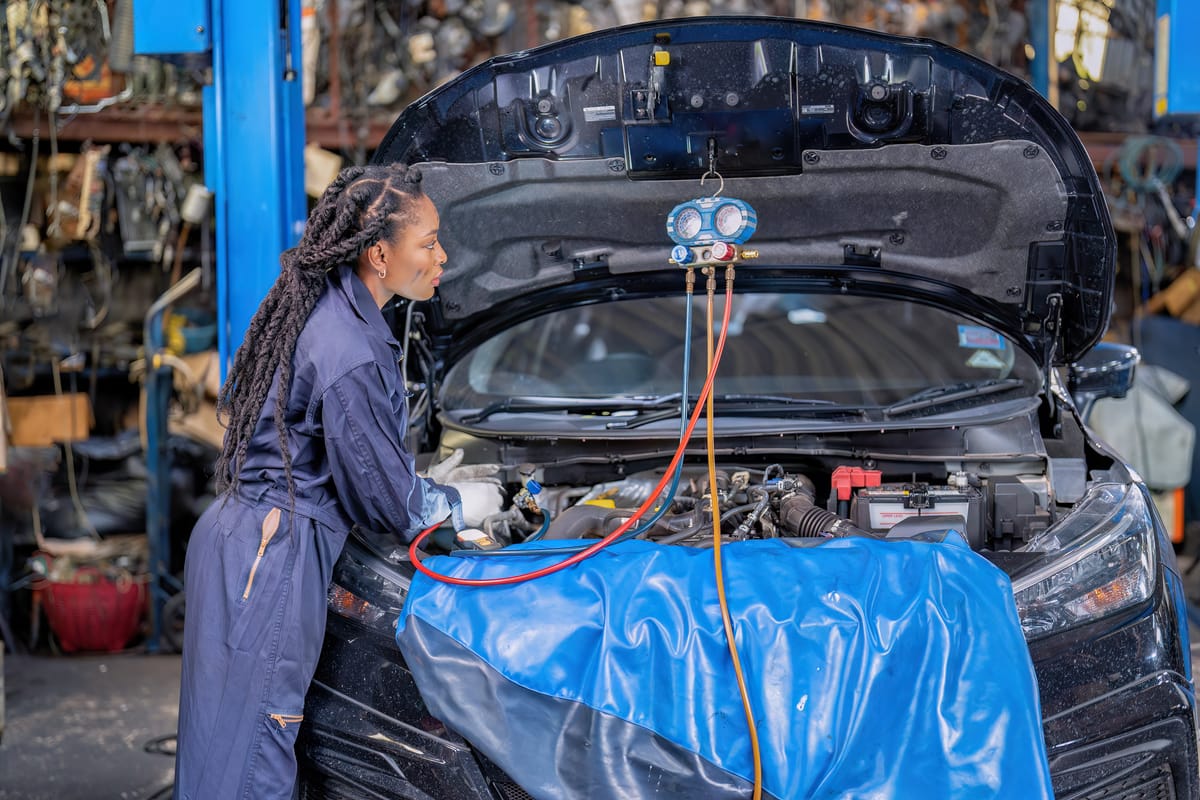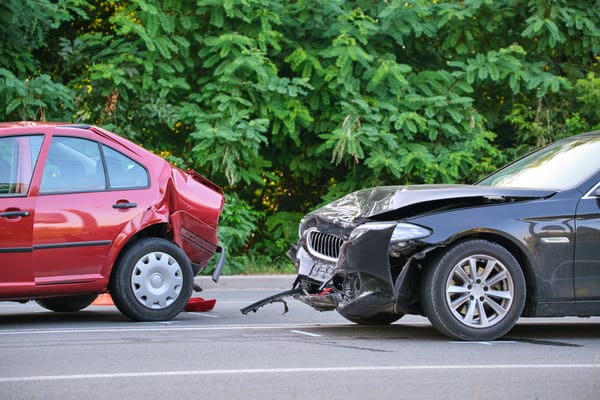Stop Burning Cash: 5 DIY Car Maintenance Tips for Kenyan Drivers

Let's talk about your car. You love it (most days). But those garage bills? Zinachoma. Every time a small light comes on, you feel your wallet get lighter. The mech is a great person, but you don't need to be on their speed dial for every little thing.
Thing is, there are so many basic car repairs you can handle yourself. Right at home. All you need are a few tools and a bit of confidence. Learning DIY car maintenance doesn't just save you money. It helps you understand your car better. You'll catch small problems before they become big, expensive ones.
At Peach Cars, we believe every driver can take charge of their car’s health. We provide a platform for buying and selling quality, inspected, used cars, and we also want you to feel empowered when driving them.
Here are five simple car maintenance tips you can tackle this weekend.
1. Master the Oil Change: Your Engine's Best Friend
Your engine has many moving parts. They grind against each other at high speed. Engine oil is the slippery stuff that stops them from turning into expensive metal shavings. It lubricates, cleans, and cools the engine.
Changing it is the single most important DIY car maintenance task.
Tools You'll Need
- New engine oil (check your owner's manual for the right grade, like 5W-30)
- A new oil filter
- A drain pan
- A wrench or socket set (for the drain plug)
- An oil filter wrench
- A funnel
- Car jacks and jack stands (or ramps)
- Rags or paper towels
- Gloves (this gets messy)
Step-by-Step: How to Fix Your Car's Oil
- Warm up the car. Run the engine for 5 minutes. This helps the oil flow out easily. Don't let it get blazing hot.
- Lift the car. Park on a flat, level surface. Use your car jack to lift the front and always secure it with jack stands. Safety first. Never work under a car supported only by a jack.
- Find the drain plug. Look under the engine for a single, large bolt. This is the oil drain plug.
- Drain the old oil. Place your drain pan underneath. Loosen the plug with your wrench. Unscrew it by hand (careful, the oil will be warm). Let it all drain out.
- Replace the plug. Once it's just dripping, wipe the area clean. Screw the drain plug back in and tighten it (snug, but don't overtighten).
- Remove the old filter. Find the oil filter (a cylindrical canister). Put the drain pan under it. Use the filter wrench to loosen it. Unscrew it by hand and let the remaining oil drain.
- Prep the new filter. Take your new filter. Dip a finger in the new oil. Smear a light coat of oil on the rubber gasket of the new filter. This ensures a good seal.
- Install the new filter. Screw the new filter on by hand. Once it touches the engine, give it another three-quarter turn. Do not use the wrench to tighten it.
- Add new oil. Lower the car. Open the oil cap in the engine bay. Use a funnel to pour in the new oil. Check your manual for the exact amount (e.g., 4 litres).
- Check the level. Wait a few minutes. Pull out the dipstick, wipe it, re-insert it fully, and pull it out again. The oil level should be between the "F" (Full) and "L" (Low) marks.
A Note on Safety and Disposal
This is a messy job. Wear old clothes or find some overalls. Also keep in mind that the engine and oil can be hot.
- Used motor oil is toxic.
- Do not pour it down the drain or on the ground.
- Put it in a sealed container (like the one the new oil came in).
- Take it to a designated disposal point. Many petrol stations or garages will take it. This is a requirement by environmental bodies like NEMA (National Environment Management Authority).
2. Breathe Easy: Replacing Your Air Filters
Your car needs to breathe, just like you. It sucks in a huge amount of air to mix with fuel for combustion. The engine air filter stops dust, pollen, and road grit from getting into your engine.
A clogged filter starves your engine of air. This reduces power and wastes fuel.
Why This Car Care at Home is Key
- Better Fuel Economy: An engine that breathes easily is more efficient.
- Increased Horsepower: More air equals a better "bang" in the cylinders.
- Longer Engine Life: You're stopping abrasive dirt from scratching up the inside of your engine.
By the way, your car actually has two filters. The engine air filter (for the engine) and the cabin air filter (for the air you breathe in the car). Both are easy to change.
How to Locate and Replace Them
- Engine Air Filter: Open the bonnet. Look for a large, black plastic box near the top of the engine. It will have a large hose coming out of it.
- This box is usually held shut by metal clips or a few screws.
- Open the clips or remove the screws. Lift the cover.
- You'll see the old filter. It's often a paper-like rectangle or circle.
- Note which way it sits. Pull the old one out.
- Wipe out any dust or leaves from the filter box.
- Put the new filter in, making sure it sits exactly like the old one.
- Secure the cover. Done.
- Cabin Air Filter: This one is usually behind the glove box. Empty the glove box. On the sides, you'll find clips or tabs. Squeeze them to let the glove box swing all the way down.
- Behind it, you'll see a small plastic cover. Unclip it, slide out the old filter (it will be disgusting), and slide the new one in. Make sure to check the "airflow" arrow printed on the filter's side.
Recommended Replacement Intervals
Check your owner's manual. A good rule of thumb is to replace the engine air filter every 20,000 to 25,000 km. If you drive on very dusty Kenyan roads, check it more often. A high-quality filter from a reliable source can improve performance.
3. The Fluid Check: Your Car’s Lifeblood
Your car runs on several vital fluids, not just fuel. Checking them takes five minutes and is a crucial part of car care at home.
The 'Big Three' to Check
- Engine Coolant (Antifreeze): This is in the "radiator overflow" tank (usually a white plastic tank). It stops your engine from overheating or freezing.
- Brake Fluid: This is in a small, (usually) see-through reservoir near the driver's side. This fluid is what gives your brake pedal its power.
- Windshield Washer Fluid: This is the tank for your wipers. While not critical for the engine, it's vital for visibility when it rains or a truck splashes mud on you.
How to Check Your Levels
SAFETY: Never, ever open the main radiator cap when the engine is hot. Hot, pressurised steam will spray out and cause severe burns. Mchezo hapana.
- Park on level ground. Make sure the engine is cool.
- Engine Coolant: Look at the plastic overflow tank. It has "MIN" and "MAX" lines on the side. The coolant level should be between them. If it's low, top it up only with the specific type of coolant your car requires (check the manual).
- Brake Fluid: Look at the reservoir. It also has "MIN" and "MAX" lines. The fluid should be a light, honey colour. If it's dark brown or black, it needs to be changed by a professional. If the level is low, it could mean your brake pads are worn, or you have a leak. This is a serious safety issue.
- Washer Fluid: Pop the cap (it usually has a windshield icon). Look inside. If it's low, top it up with a proper washer fluid (si maji ya tap na sabuni, this can clog the lines).
If you're constantly topping up any fluid (except washer fluid), you likely have a leak. That's a sign to visit a mechanic. If you see a warning light, our guide on understanding dashboard warning lights can help.
4. Battery Basics: Keep the Power On
Nothing is more frustrating than the click-click-click of a dead battery. That Ngai mwathani moment when the car just won't start. You can prevent this with basic battery maintenance.
Cleaning Battery Terminals
Over time, a crusty, white-or-blue powder (corrosion) can build up on the battery terminals. This gunk blocks the flow of electricity.
- Get your supplies: A baking soda and water paste, an old toothbrush, rags, and a wrench.
- Disconnect the battery. Always disconnect the negative (black) terminal first. Then disconnect the positive (red) terminal.
- Clean: Apply the baking soda paste to the terminals and the cable clamps. Scrub them with the toothbrush until they are sparkling clean. The corrosion will fizzle away.
- Rinse and Dry: Wipe everything clean with a damp rag, then dry it thoroughly.
- Reconnect: Reconnect the positive (red) terminal first. Then reconnect the negative (black) terminal. Tighten them up.
Jump-Starting Safely
If your battery does die, you need to know how to fix your car with a jump-start. Doing it wrong can fry your car's electronics.
Here is the one, safe way to do it.
- Park a car with a good battery close, but do not let the cars touch.
- Turn both cars off.
- Connect the cables in this exact order:
- Red to Dead: Connect one red clip to the positive (+) terminal of the dead battery.
- Red to Good: Connect the other red clip to the positive (+) terminal of the good (donor) battery.
- Black to Good: Connect one black clip to the negative (-) terminal of the good battery.
- Black to Metal: Connect the final black clip to an unpainted metal surface on the dead car (like an engine bolt), far away from the battery. This prevents sparks near the battery, which can release flammable gases.
- Start the good car. Let it run for 2-3 minutes.
- Try to start the dead car. It should fire up.
- Remove the cables in the reverse order you put them on.
- Drive the jump-started car for at least 30 minutes to let the alternator recharge the battery.
5. Tyre Care 101: Don't Skid Yourself
Your tires are the only part of your car that actually touches the road. Their condition is a massive safety factor. This car care at home task is non-negotiable.
Checking Tire Pressure (PSI)
- Why: Under-inflated tires wear out faster, waste fuel, and handle poorly. Over-inflated tires give a harsh ride and have less grip.
- How: Check the pressure when the tires are "cold" (before you've driven).
- What PSI? Do NOT use the number on the tire itself. The correct pressure is on a sticker inside your driver's door jamb or in your owner's manual.
- Tool: Use a simple pencil-style or digital tire pressure gauge. Unscrew the valve cap, press the gauge on firmly, and read the number. Add or release air as needed.
Inspecting for Wear and Tear
- Tread Depth: Your tire's grooves are designed to channel water away. When they get shallow, you can easily hydroplane.
- The Test: Most tires have "tread wear indicator bars." These are small, raised bars inside the grooves. If the main tread is level with these bars, the tire is finished.
- Look for: Cracks in the sidewall, bulges (like a kamoja), or uneven wear. Uneven wear (e.g., only the inside edge is worn) often points to a different problem, like poor alignment.
The Art of Tyre Rotation
- Why: Your front tires wear out differently than your back tires (especially on a front-wheel-drive car).
- What: Tire rotation simply means moving them around. The front-left goes to the back-right, etc. (Check your manual for the correct pattern).
- When: Do this every 8,000 to 10,000 km. It makes all four tires last much longer, saving you money. This is one of the best basic car repairs for extending the life of your rubber.
You've Got This: DIY Car Care is Possible
See? That wasn't so scary. You don't need to be a master mech to handle these five tasks.
By taking an hour or two every few weekends for DIY car maintenance, you'll save a serious amount of money. More importantly, you'll know your car inside and out. You'll drive with more confidence, knowing it's safe and well-cared-for.
Start small. Pick one task this weekend. Change that air filter. Check those fluids. You'll feel a new sense of pride in your ride.
Of course, some jobs are still for the pros. Things like brake replacements, suspension work, or dealing with scary warning lights are best left to experts. For those bigger jobs, give it to the professionals. Meanwhile, here at Peach Cars, you can get clean, inspected, and affordable used cars that are not only reliable but will give peace of mind.
Now, go get your hands a little dirty. Your car (and your wallet) will thank you.




